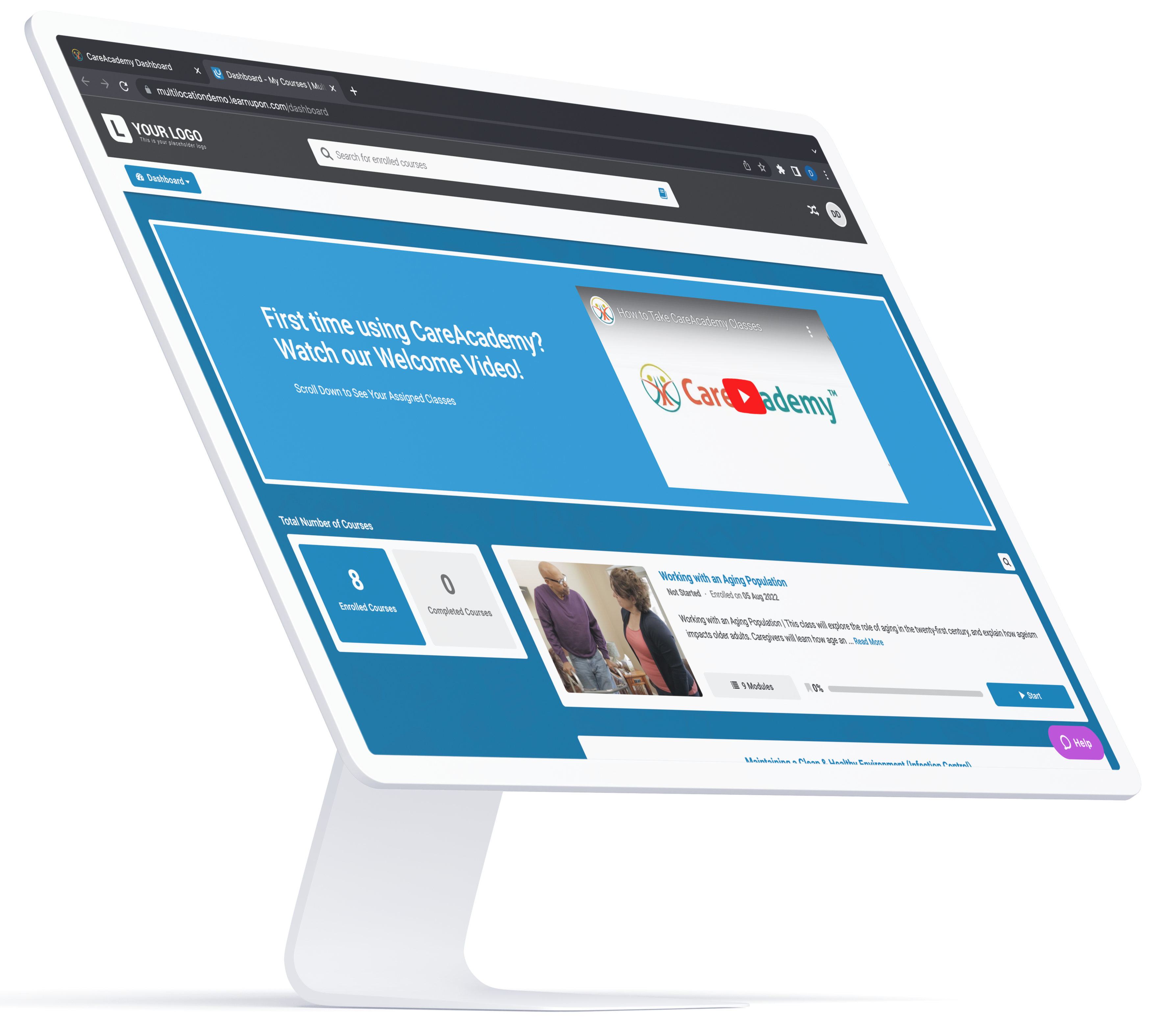-
The Importance of Positive Interactions with Clients
-
Providing Nail Care
NEW
-
Providing Skin Care
NEW
-
Introduction to Antipsychotic Medication
NEW
-
Introduction to Mood Stabilizers
-
Introduction to Anti-Anxiety Medications
NEW
-
Introduction to Antidepressants
NEW
-
Bathing a Client in Bed
NEW
-
Caring for a Client with a Substance Use Disorder
NEW
-
Identifying Substance Abuse
NEW
-
Introduction to Substance Abuse in Older Adults
NEW
-
Providing Perineal Care
NEW
-
Evacuating Your Client
NEW
-
Emergency Kits: Preparing an Evacuation Kit
NEW
-
Emergency Kits: Preparing a Stay at Home Kit
NEW
-
Assisting Your Client with Making an Evacuation Plan
NEW
-
Your Role as a Direct Care Worker: Emergency Planning and Response
-
Electronic Visit Verification (EVV)
NEW
-
Cleaning the Gastrostomy Site
-
Understanding Tube Feeding Using a Feeding Pump
-
Understanding Tube Feeding Using the Gravity Drip Method
-
Understanding Tube Feeding Using a Syringe (Bolus Method)
-
Direct Care Workers and the Care Team
-
Defining Scope of Practice
-
Defining Long-Term Care
-
How to Perform Digital Stimulation
-
Changing and Cleaning a Urinary Catheter Drainage Bag
-
Emptying a Urinary Catheter Drainage Bag
-
Passive Range of Motion
-
Active Range of Motion for the Lower Body
-
Assisting with Wheelchairs
-
Assisting with Mobility Devices
-
Assisting with Hoyer Lifts
-
Assisting an Older Adult to Transfer Using a Slide Board
-
Assisting an Older Adult to Transfer Using a Mobility Device
-
What is Parkinson's Disease?
-
What is a Stroke?
-
Assisting with the Use of Oxygen
-
Observing and Documenting Medication Self-Administration
-
Purpose and Types of Medications
-
Understanding Prescription Labels
-
Observing the Urinary System
-
Assistance with Urinal Use
-
Heat and Ice for Treating Pain
-
Physical and Verbal Cues of Pain
-
Assessing Pain
-
Observing and Reporting Pain
-
Taking Blood Pressure
-
Understanding Blood Pressure
-
Taking Respirations
-
Understanding Respiration
-
Taking a Pulse
-
Understanding Pulse
-
How to Report Temperature
-
Taking an Oral Temperature
-
Understanding Temperature
-
Food and Liquid Texture Modifications
-
Observing and Monitoring Nutrition
-
Basics of Food and Nutrition
-
Recognizing When a Modified Diet is Needed
-
The Digestive System
-
The Urinary System
-
The Reproductive System
-
The Endocrine System
-
Monitoring Clients with Respiratory Conditions
-
The Respiratory System
-
The Brain and Nervous System
-
Monitoring Clients with Cardiovascular Conditions
-
The Cardiovascular System
-
The Musculoskeletal System
-
The Integumentary System
-
Keeping an Older Adult with Dementia Safe at Home
-
What is Dementia?
-
Immediately After Death
-
Last Moments of Life
-
Assisting with Emotional Needs at the End of Life
-
Assisting with Physical Needs at the End of Life
-
Diagnosis and Treatment of Mental Illness
-
Supporting a Client with Mental Illness
-
Advance Directives
-
Reporting Elder Abuse
-
Subjective Observations
-
Objective Observations: Senses
-
Preventing Elder Abuse
-
Types of Elder Abuse
-
Defining Abuse, Exploitation, and Neglect
-
HIV Transmission and Infection
-
What is Empathy?
-
Dealing with Conflict
-
Taking a Tympanic Temperature
-
Active Range of Motion for the Upper Body
-
How to Administer Oral Liquids
-
Documentation Problems
-
Determining Normal vs. Abnormal Conditions
-
Signs and Symptoms of Depression
-
Signs and Symptoms of Anxiety
-
Setting Clear Goals and Priorities
-
Living Will
-
Health Care Proxy

